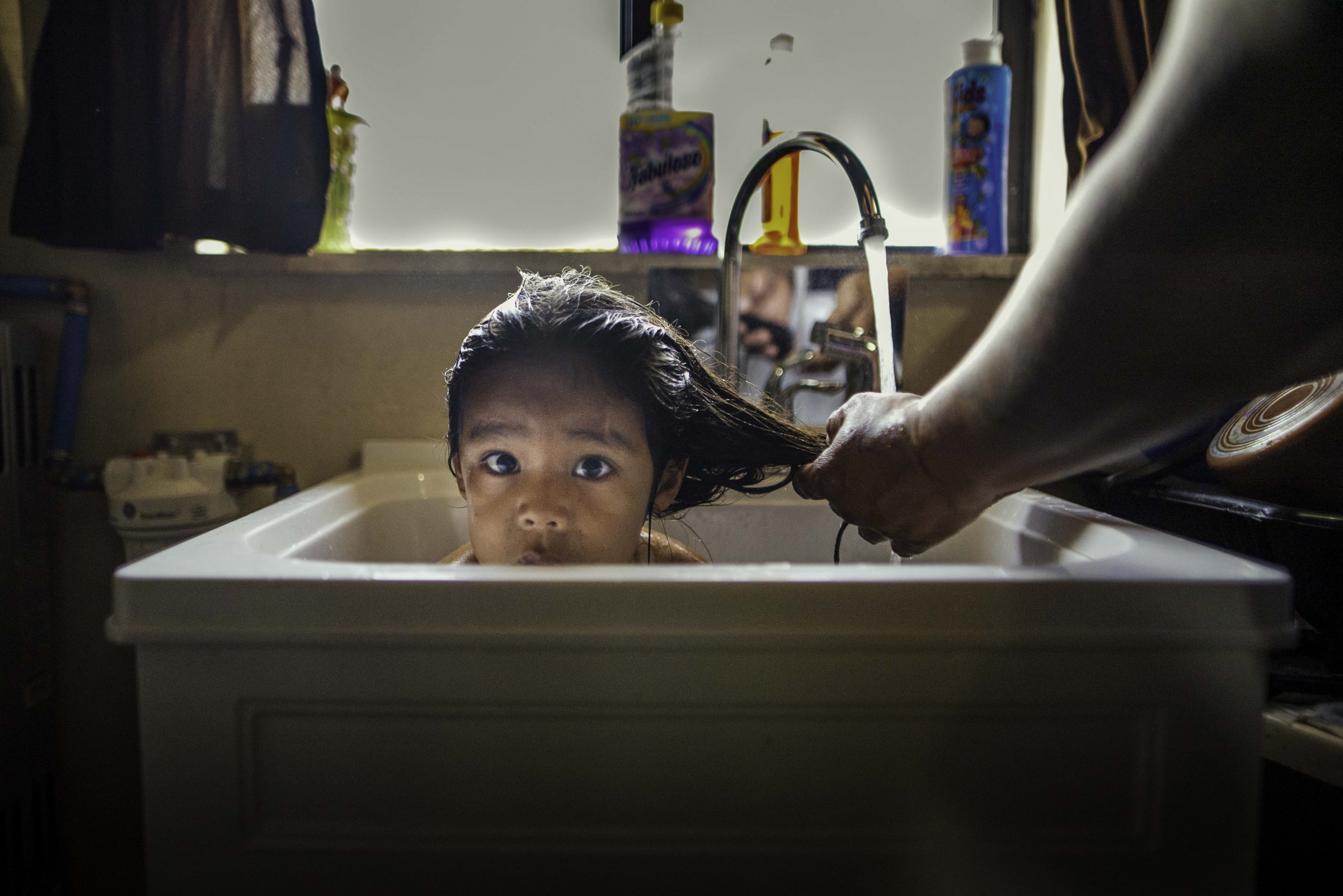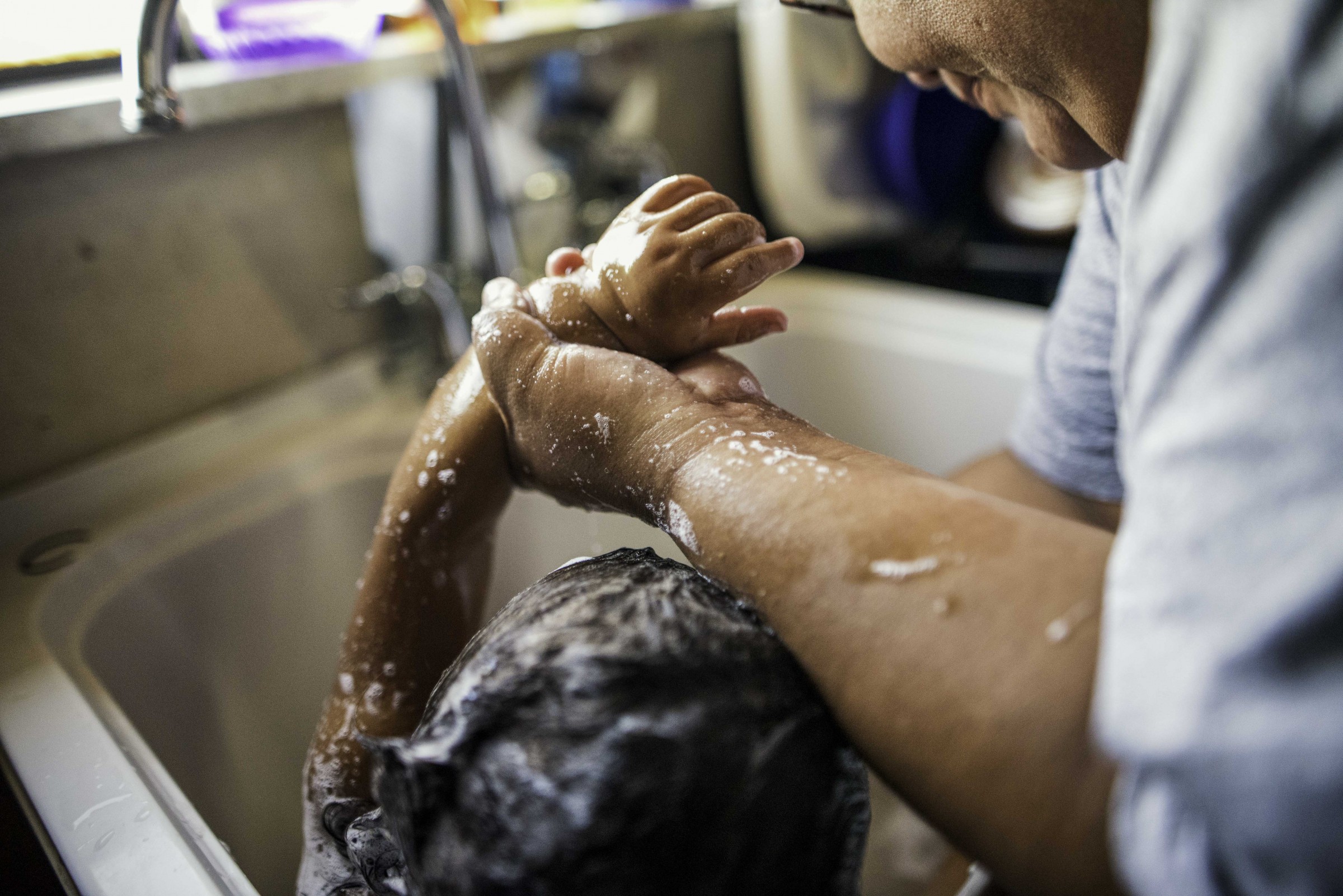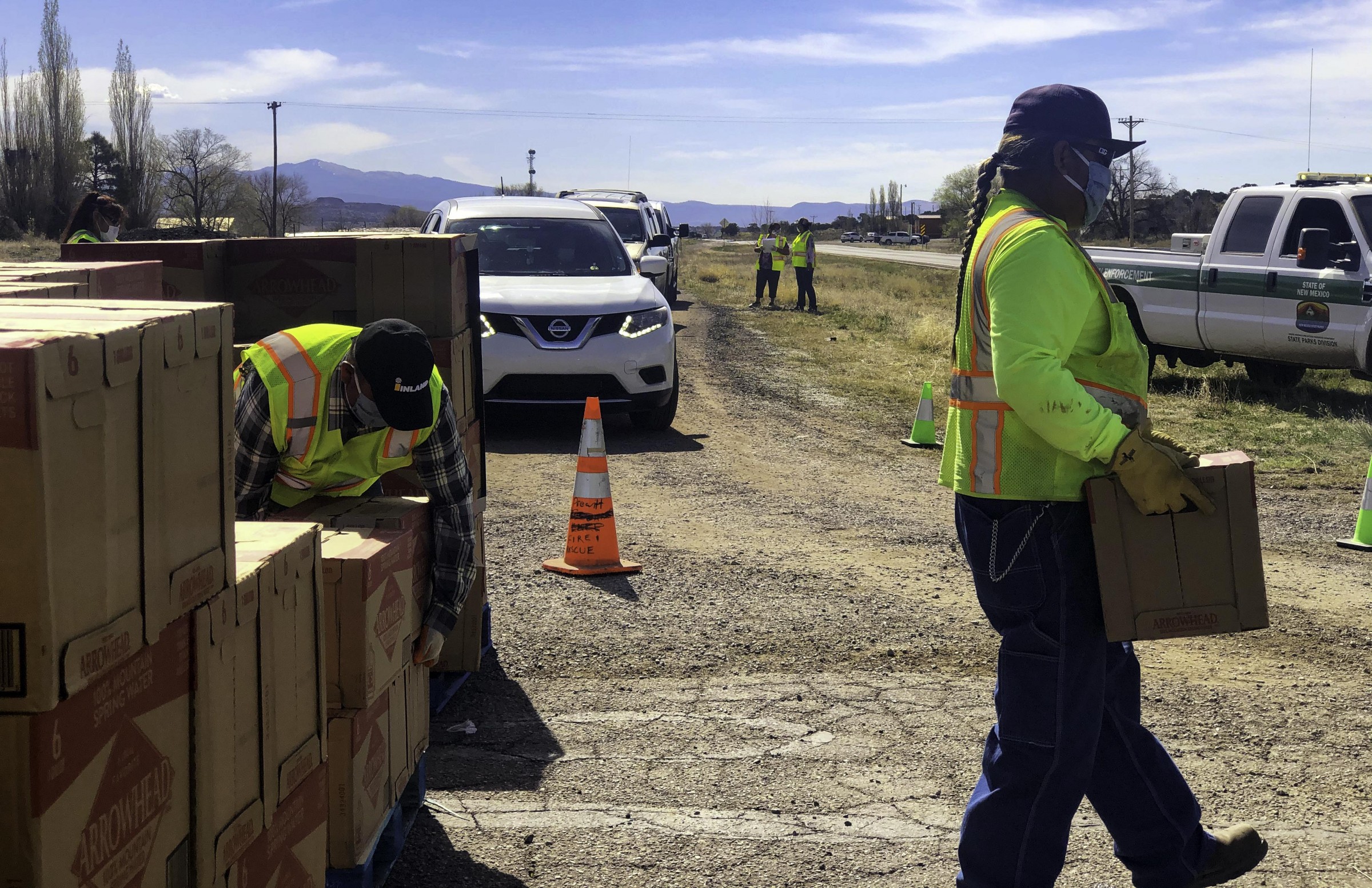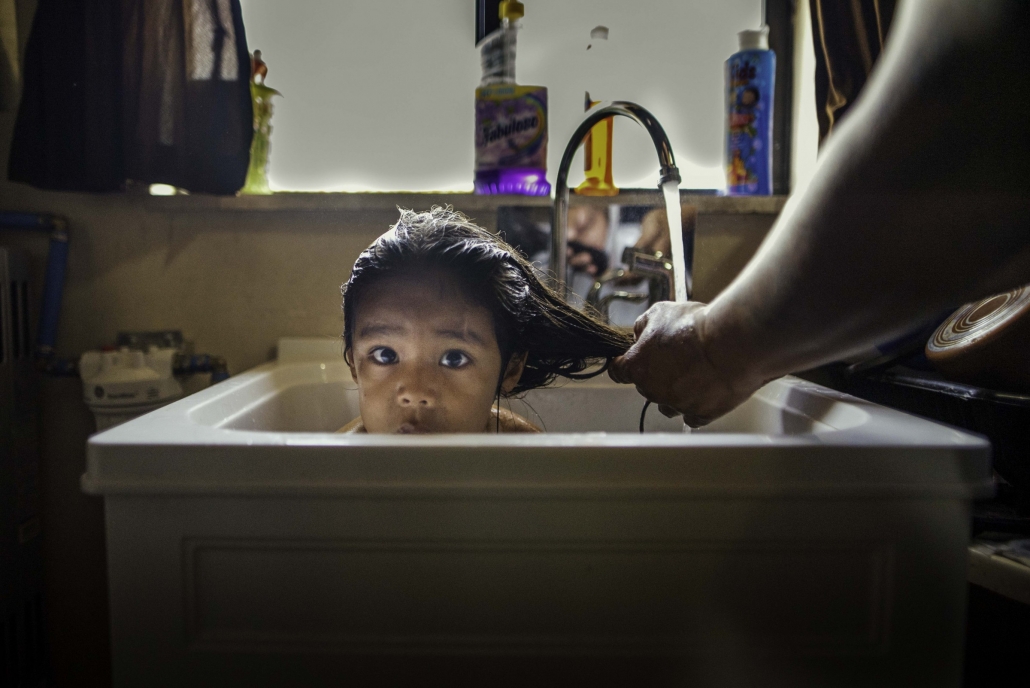
A parent bathes their child in the sink with newly installed running water from DigDeep’s Home Water System on the Navajo Nation. Photo © DigDeep
By Jane Johnston, Circle of Blue
For Indigenous people living across the United States, the Covid-19 pandemic is the newest chapter in a long history of fighting against disease. The struggle this time is much harder because of a basic deficiency: not all tribe members have clean water at home.
“Covid is now a secondary problem,” said Emma Robbins, the director of the Navajo Water Project and a member of the Navajo Nation. “The primary problem is now drinking water.”
The Navajo Water Project was founded in 2014 by DigDeep, an organization focused on access to water, sanitation, and hygiene in the United States. The project aims to bring running water to Navajo families across New Mexico, Utah, and Arizona.
The U.S. Environmental Protection Agency estimates that about 15 percent of Navajos living in the Navajo Nation don’t have piped water in their homes. Insufficient clean water has exacerbated the spread of Covid-19. In May, the Navajo Nation surpassed New York State for the highest infection rate per capita in the country.
For the last seven years, the Navajo Water Project has focused on installing home water systems to serve families in rural areas who otherwise would travel miles to retrieve water. When the pandemic hit, the team quickly adapted.
“We realized by the beginning of March that we couldn’t work in homes safely anymore, because the virus was being spread,” George McGraw, director and founder of DigDeep, told Circle of Blue. Since then, DigDeep staff have delivered around 263,000 gallons of water, in reusable jugs or bottles, directly to people’s doorsteps.
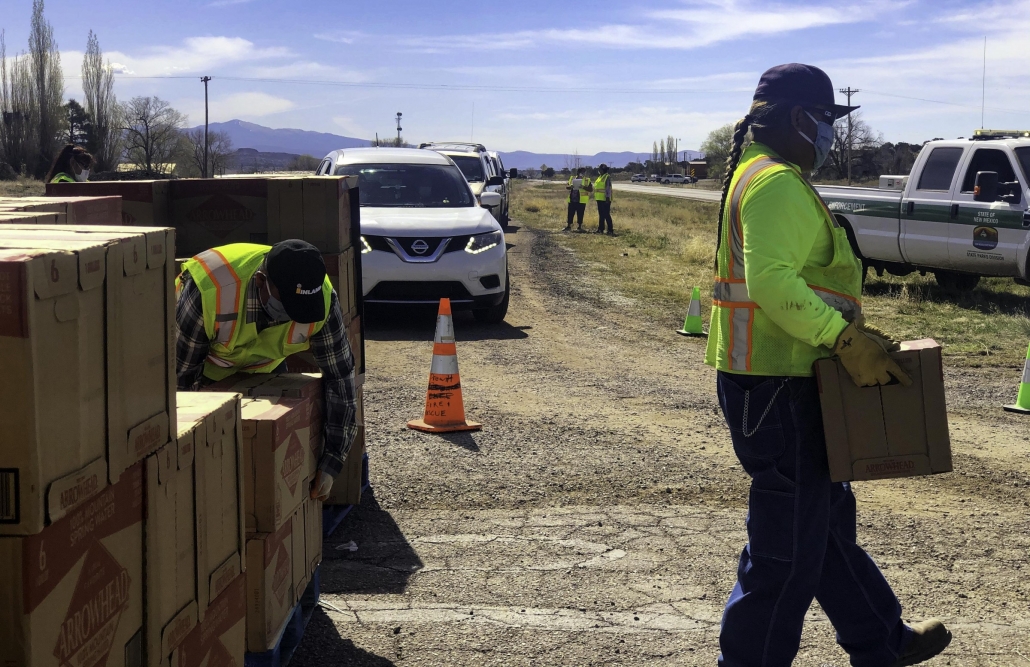
Community members distribute water at a designated pickup location on the Navajo Nation. From here, residents will drive the water the ‘last mile’ to reach remote and rural households that are isolated and in need during the COVID-19 pandemic. Photo © DigDeep
“Obviously, bottled water is not sustainable,” Robbins said. But in these circumstances, it makes sense. “We get that at the beginning, especially because it’s in a bottle, that’s the safest and most hygienic way to get water to people when they’re all spread out.”
Now they are turning their attention to a more sustainable source of water: 275-gallon tanks, refilled weekly or biweekly depending on the family size. “The main goal here is to prevent people from going and hauling their own water because obviously sheltering at home is one of the most important things right now,” Robbins said.
“When families don’t have running water,” she continued, “a lot of times what’s happening is they’re having to travel off reservation to border towns, and they’re exposing themselves unnecessarily.”
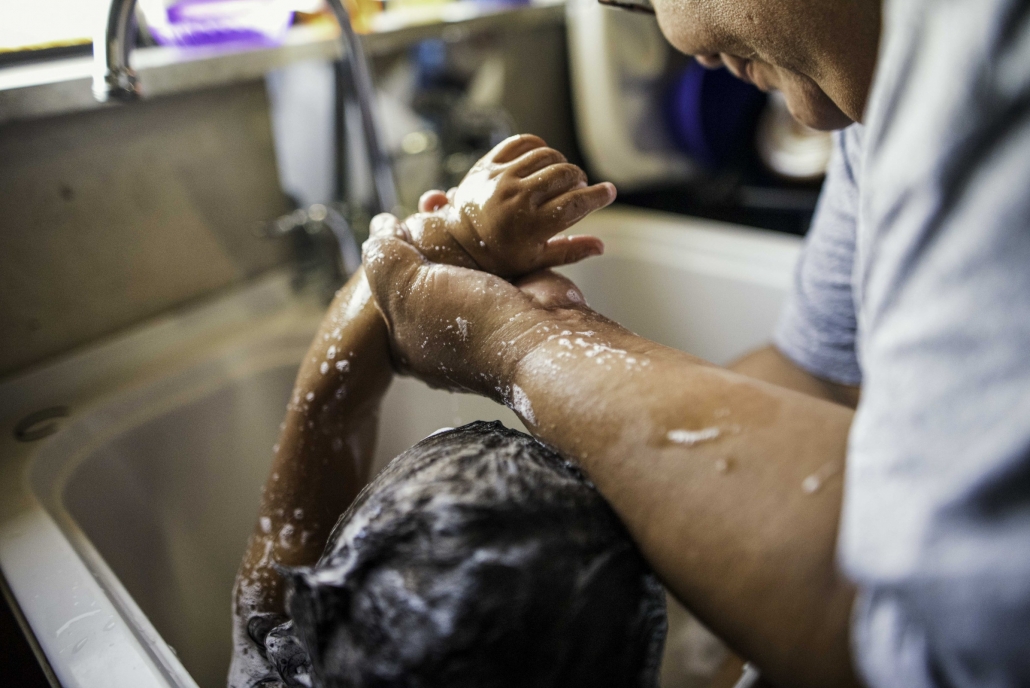
A parent bathes her child in the sink with newly installed running water. Water for hydration and sanitation are two of the biggest needs in households across the Navajo Nation, especially now amid the COVID-19 pandemic. Photo © DigDeep
Many Tribes, Many Water Struggles
Access to clean water has been a long-standing problem in Native communities. Rosalyn LaPier, an environmental studies professor at the University of Montana and member of the Blackfeet Nation, told Circle of Blue that most people on the Blackfeet reservation, where she lives, have running water. But running water does not equal safe water. “Oftentimes,” she said, “if you have well water and it’s coming straight through the aquifer, that doesn’t mean that water is clean.”
In one Blackfeet community, East Glacier Park, a boil water order was issued in 1994 due to high turbidity. It was not lifted until 2012.
LaPier also said that their water has been contaminated with fecal matter in the past.
Scholars of Native American history have linked centuries-long battles against the consequences of colonialism — smallpox outbreaks in the 18th century, forced removal in the 19th century, and lack of infrastructure and healthcare — with increased susceptibility to diseases like diabetes, hypertension, lung disease and, now, Covid-19.
McGraw said lack of access to clean water for handwashing could exacerbate the spread of Covid-19 in many Native American communities. “I imagine that in the places where those things are impossible and where people are facing underlying health issues the transmission rate is higher,” he said.
For many Native Americans, like the Blackfeet, water is not just seen as a human right — it’s sacred. LaPier, whose expertise is in Indigenous and traditional ecological knowledge, said that the Blackfeet believe that some water sources are sacred because of deities that live there and should be set aside for use in religious traditions.
“So for the Blackfeet,” LaPier said, “protecting our water, making sure that it is clean so that people can participate in those practices, is really important.”
Like many other Native American communities, the Blackfeet reservation has remained in lockdown, even as the states around them have started reopening. “I’m glad that our tribal government is being really strict,” she said of the shutdown, “because of the history of tribal communities.”
This history is not lost on those who are still living with the consequences. LaPier recalled early Native American history, when entire communities were wiped out by diseases like smallpox and measles. The effects of that era are still felt today, both through generational emotional trauma and genetics. Research has shown that after being exposed to European diseases, the genes of Indigenous people were altered for generations to come, unable to cope with new illnesses.
The effects of that era are exacerbated today through lack of infrastructure. “We have a healthcare system that is underfunded. We have a difficult time addressing the major health issues that we have right now,” LaPier said. “So I think it’s good that our tribes and other tribes are just being really hypervigilant about making sure that people stay safe.”
Robbins said that her community is taking Covid-19 seriously because they have no choice.
“We don’t want to continue to lose our elders, because the more we lose our elders, the more we lose our culture,” she said. “We fought hundreds of years to continue to be able to exist as just people.”
More than anything, Robbins wants people outside of the reservation to understand her community’s strength. “We’re really resilient. We’re fighting hard,” she said. “Navajo women, we’ve always been leaders in our community, we’ve always cared for our community.”
“I see that every day,” she said.
Jane is a Communications Associate for Circle of Blue. She writes The Stream and has covered domestic and international water issues for Circle of Blue. She is a recent graduate of Grand Valley State University, where she studied Multimedia Journalism and Women, Gender and Sexuality Studies. During her time at Grand Valley, she was the host of the Community Service Learning Center podcast Be the Change. Currently based in Grand Rapids, Michigan, Jane enjoys listening to music, reading and spending time outdoors.

